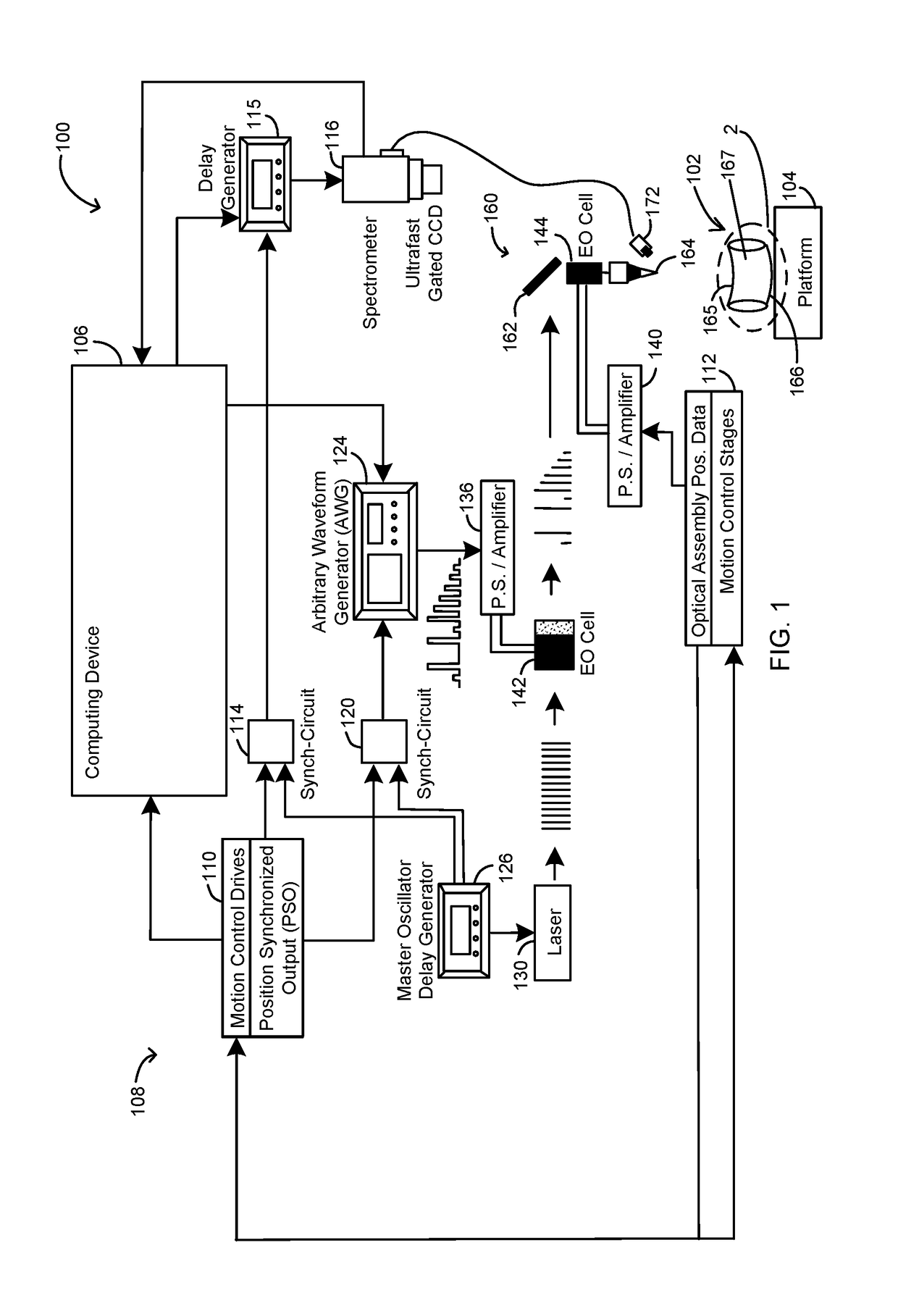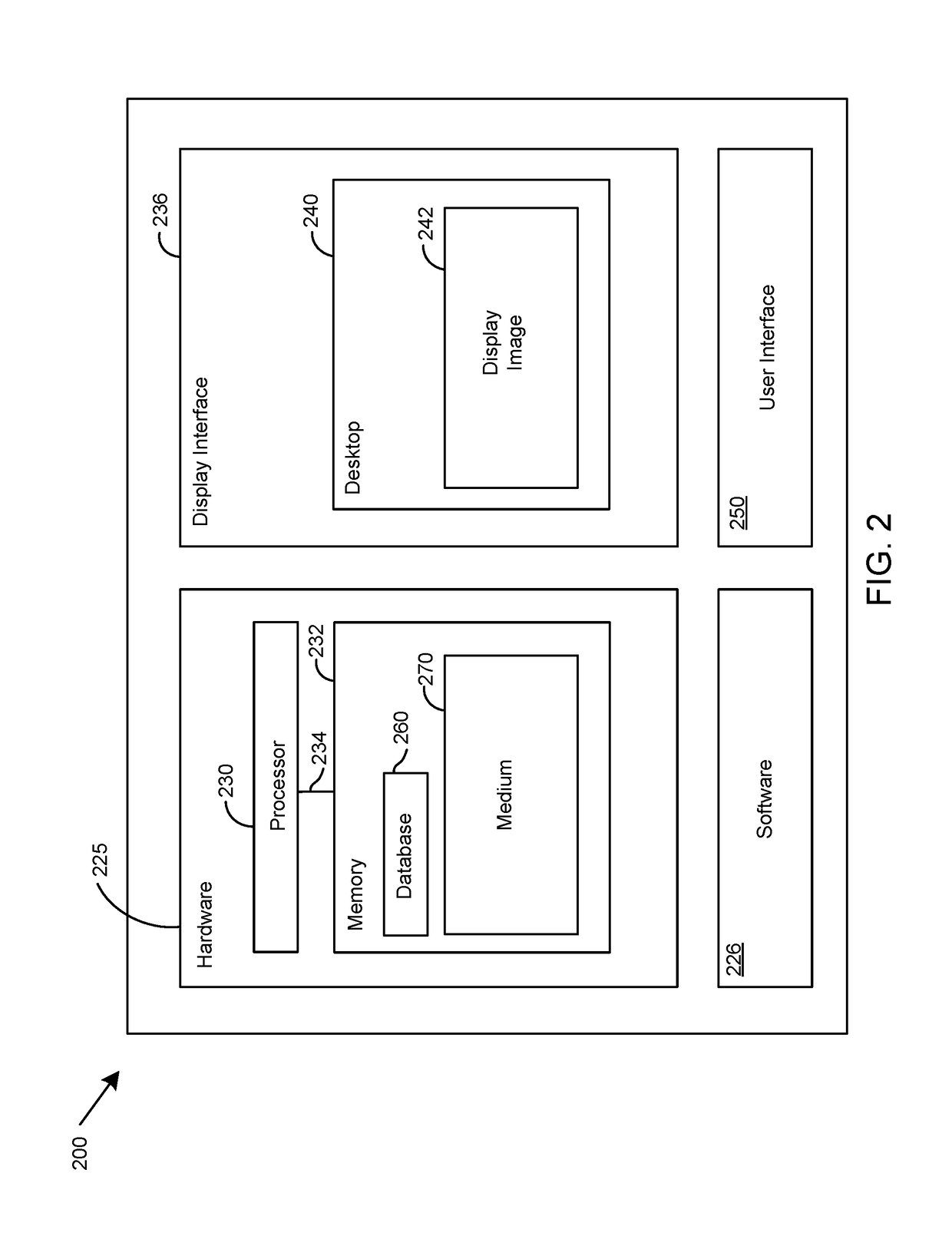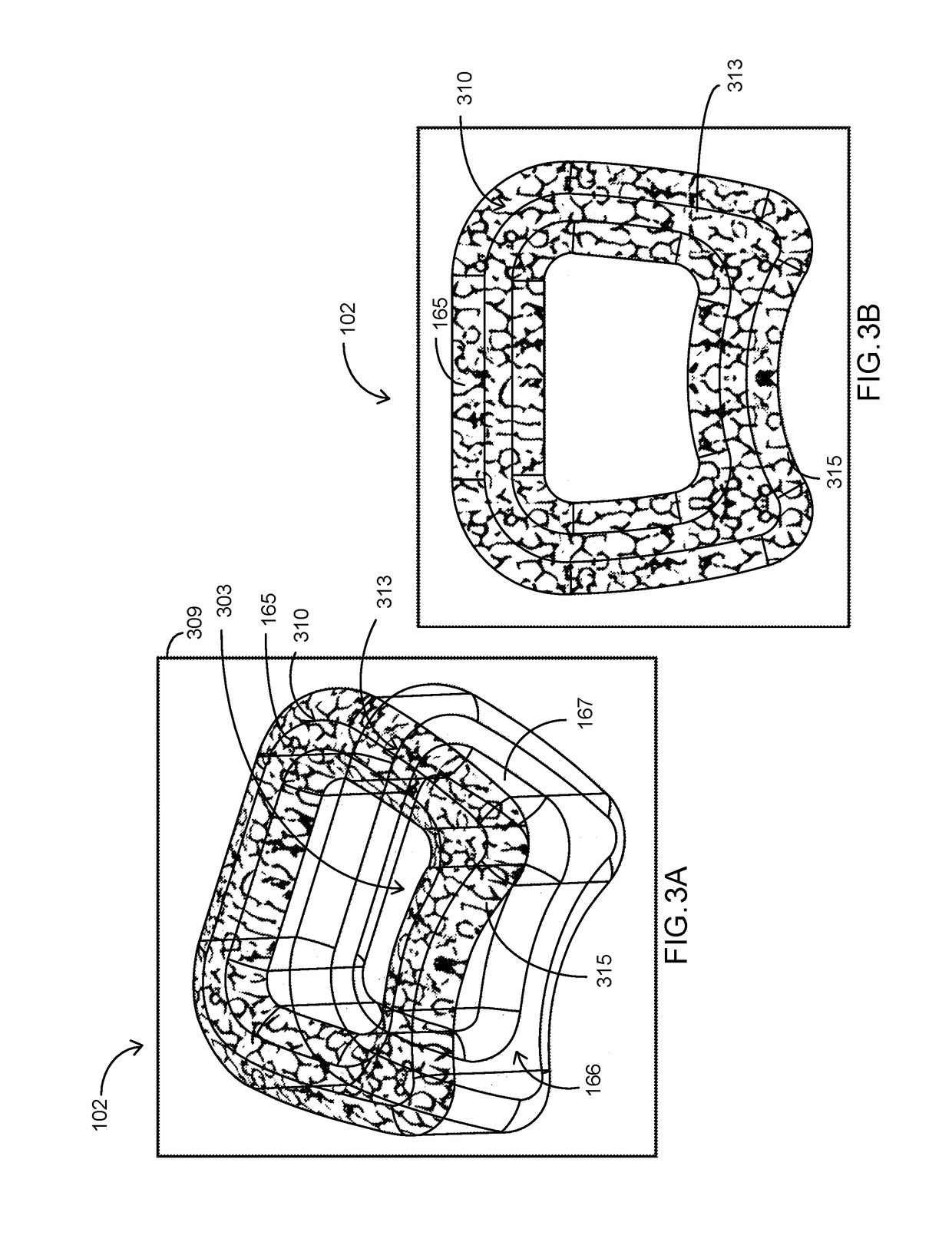Systems and methods for the patterning of material substrates
a technology of material substrates and patterns, applied in the field of system and method for the patterning of material substrates, can solve the problems of not being compatible with many materials or integrated systems, using high-temperature annealing, and and achieving the effect of preventing the single-step fabrication of multi-functional systems and appreciable thermal stresses and temperature gradients
- Summary
- Abstract
- Description
- Claims
- Application Information
AI Technical Summary
Benefits of technology
Problems solved by technology
Method used
Image
Examples
Embodiment Construction
[0014]The embodiments described herein enable the in-situ patterning of material substrates, such as GC substrates, with various phases, such that the GC substrate can be imbued with various functionalities and can create complex highly integrated systems within the GC substrate. Such systems can include photonic, bionic, and electronic systems among others. The embodiments described herein include, for example, the use of laser scripted pulse modulation techniques to directly transform the amorphous phases of the GC matrix into discrete etchable (soluble) phases, thus inducing site-selective phase conversion during the laser patterning process. Such techniques enable for the control and definition of variations in the electrical and optical character, mechanical compliance, and chemical solubility of the GC substrate. The laser genotype modulation approach can be translated to other photo-structurable GCs and a wide array of other related materials, including organic-inorganic hybr...
PUM
| Property | Measurement | Unit |
|---|---|---|
| energy | aaaaa | aaaaa |
| distance | aaaaa | aaaaa |
| porosity | aaaaa | aaaaa |
Abstract
Description
Claims
Application Information
 Login to View More
Login to View More - R&D
- Intellectual Property
- Life Sciences
- Materials
- Tech Scout
- Unparalleled Data Quality
- Higher Quality Content
- 60% Fewer Hallucinations
Browse by: Latest US Patents, China's latest patents, Technical Efficacy Thesaurus, Application Domain, Technology Topic, Popular Technical Reports.
© 2025 PatSnap. All rights reserved.Legal|Privacy policy|Modern Slavery Act Transparency Statement|Sitemap|About US| Contact US: help@patsnap.com



